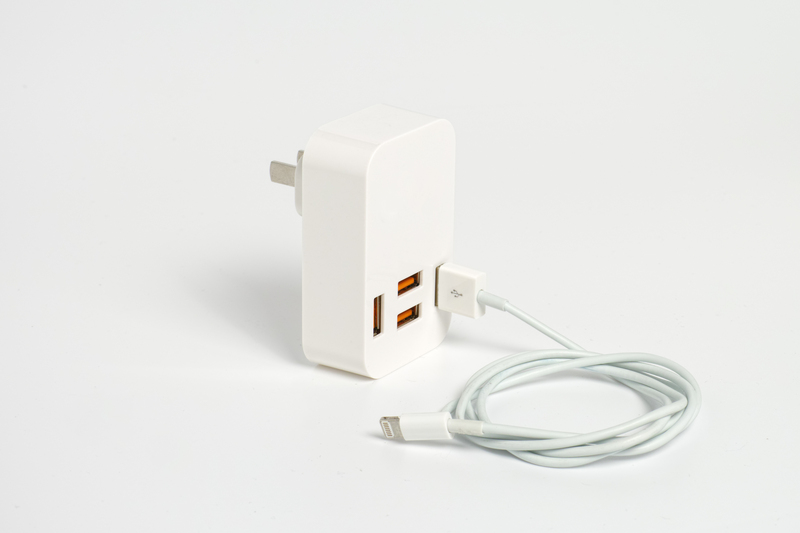What to Do Before Storing Your Freezer for the Season: The Complete Guide
Freezers are invaluable appliances, allowing us to preserve food for months at a stretch. However, there are times when you may need to store your freezer temporarily--perhaps you're rearranging your home, upgrading your appliances, or simply don't need it during a particular season. Before you unplug and move your freezer into storage, it's crucial to follow the right steps to ensure its longevity and safe, odor-free use in the future. This comprehensive guide will walk you through everything you need to know before storing your freezer for the season.

Why Is Proper Freezer Storage Preparation Important?
Improper storage can lead to irreversible appliance damage, lingering odors, mold growth, and even voided warranties. By preparing your freezer correctly before putting it away for the season, you protect your investment and ensure that it performs efficiently when you need it again.
- Prevents mold and mildew growth
- Reduces risk of foul odors
- Prevents damage to internal components
- Keeps your appliance warranty valid
- Ensures hassle-free restart in the future
Step-by-Step Checklist: How to Prepare a Freezer for Seasonal Storage
1. Unplug and Defrost Your Freezer
The first and most crucial step in freezer storage preparation is unplugging the appliance and allowing it to defrost. Even frost-free models should be given time to reach room temperature before storage. Here's how to do it right:
- Unplug the freezer and remove any extension cords.
- Open the lid or door and let the interior warm up -- this could take several hours, depending on the amount of frost build-up.
- Remove all food items and transfer perishables to a working freezer.
- Place towels around the base to absorb melting ice and water.
- If there is heavy frost, gently speed up the process with a bowl of hot water placed inside (never use sharp objects to chip ice).
Tip: Avoid using hairdryers or heat guns as they may damage the interior lining.
2. Clean the Interior Thoroughly
Once the freezer has completely thawed and all excess water has been absorbed or wiped up, it's time for a thorough cleaning. This is essential for preventing mold, mildew, and bad odors that could develop during storage.
- Prepare a cleaning solution using mild dish soap or a mixture of one part vinegar to two parts water.
- Remove wire baskets, shelves, and drawers and clean these items separately.
- Wipe down every interior surface (walls, base, door seals).
- Use a soft cloth or sponge rather than abrasive scrubbers.
- Rinse well with plain water and dry all surfaces thoroughly with a clean, absorbent towel.
Don't forget: Clean the gasket (the rubber door seal) as it can harbor grime and mold.
3. Deodorize to Prevent Future Odors
Storing a freezer that smells fresh ensures you won't face unpleasant odors when you reopen it next season. Here's how to keep odors at bay:
- After cleaning, wipe down interior surfaces with a baking soda and water solution (2 tablespoons baking soda per quart of water).
- Allow the inside to air out for several hours with the door open, if possible.
- Place a fresh box of baking soda, a few coffee grounds, or a tray of activated charcoal inside the freezer before closing it up for storage.
Never store a closed freezer with strong odors; it will be much harder to remove them later!
4. Clean and Inspect the Exterior
While preparing to store your upright or chest freezer, don't neglect its exterior surfaces and components.
- Wipe down the exterior with mild soap and water.
- Clean the condenser coils (usually at the back or bottom) using a vacuum with a brush attachment or a soft brush.
- Check the power cord for damage.
- Inspect the door seal for any signs of wear or cracks.
Well-maintained exteriors help prevent rust and dirt buildup during storage.
5. Keep the Door Ajar
Perhaps the most important step when preparing a freezer for seasonal storage is ensuring air circulation inside the cabinet.
- Leave the freezer door or lid slightly open; you can use a rolled towel or a special wedge device designed for this purpose.
- This prevents moisture buildup and inhibits the growth of mold and mildew.
- Some freezers have a special latch position just for this purpose -- check your manufacturer's manual.
Warning: Never seal the appliance airtight during storage!
6. Choose the Best Storage Location
Where you store your freezer can significantly impact its lifespan and performance. Consider the following factors:
- Temperature: Choose a place that stays above freezing and is out of direct sunlight. Unheated garages or outdoor sheds may not be ideal in very cold or hot climates.
- Humidity: A dry location reduces the risk of rust and mold. Avoid damp basements or areas prone to flooding.
- Safety: Place the freezer on a flat, stable surface to avoid tipping or accidental knocks.
- Access: Make sure there's enough ventilation space around the unit and easy access if you need to check on it.
Tip: Placing the freezer on a piece of plywood, mat, or bricks can help further insulate it from moisture on concrete floors.
7. Secure Electricity and Drainage (If Needed)
If your freezer will be stored plugged in (not always necessary, but sometimes recommended for newer models or built-in auto-defrost units), check that:
- The outlet is grounded and protected from power surges.
- There is proper drainage for any accidental defrost cycles or leaks.
For most seasonal storage situations, unplugging the freezer is preferable to save energy and increase safety.
Additional Tips for Safe Freezer Storage
Remove or Secure Small Parts
- Take out trays, racks, and loose bins that could fall and get damaged.
- Label and bag screws or removable parts for easy reassembly.
Protect Against Pests
- Ensure there's no food residue that can attract insects or rodents.
- Consider placing deterrents, such as mothballs, around (not inside!) the unit if your storage area is prone to pests.
Maintain a Storage Schedule
- Set reminders to check your freezer periodically while in storage.
- This is especially important if the storage area is subject to temperature or humidity fluctuations.
Common Mistakes to Avoid When Storing Your Freezer
- Sealing the Door/Lid Completely - This creates a perfect environment for trapped moisture, mold, and mildew.
- Storing with Leftover Food or Spills - Even small crumbs or drops can result in serious odors or pest infestations.
- Skipping the Defrost and Clean Steps - Moisture and residues can damage interior components and create persistent smells.
- Storing in a Damp or Extreme Temperature Area - This increases the risk of rust, condensation, and operational issues.
- Placing Heavy Objects on Top - Chest freezers, in particular, are not designed to hold weight on the lid, which may warp or damage the hinge.
How to Safely Move and Store Your Freezer
Moving Tips
- Always move the freezer upright -- tilting more than 45 degrees can damage the compressor.
- Secure the door with tape or rope during transport, but remember to remove or loosen this once the freezer is stationary in storage.
- Use a dolly or help from others to avoid injury or damaging floor surfaces.
Storing Long-Term
- Cover the freezer with a breathable fabric dust sheet (not plastic) to prevent dust without trapping moisture.
- Mark the power cord so it's easy to find later.
- Keep a note of maintenance date and location for future reference.
Getting Your Freezer Ready for Use Again
When the season changes and it's time to bring your freezer back into service, a few simple checks will ensure it runs smoothly:
- Open it up and inspect for pests, mildew, or unusual smells.
- Wipe the interior with a fresh solution of baking soda and water.
- Let it air out and dry before plugging in.
- Plug in, wait a few hours for the freezer to reach temperature, then add food.
Tip: If you find any foul odors despite earlier precautions, place a tray of activated charcoal or a bowl of vinegar inside and allow it to run empty for a few days to neutralize lingering smells.

Frequently Asked Questions (FAQ): Freezer Storage
Can you store a freezer unplugged?
Yes, most households store freezers unplugged to save energy and prevent accidental electrical hazards. Remember to leave the door open a crack and clean it thoroughly beforehand.
Is it safe to store a freezer in a garage or shed?
It depends on the temperature extremes and humidity. Freezers should be kept in a space where temperatures stay above freezing and aren't exposed to excessive moisture or heat. Use insulation if necessary.
How do I prevent my stored freezer from smelling bad?
Clean meticulously, deodorize with baking soda or charcoal, and provide ventilation with the door propped open. Avoid sealing the unit completely.
Do I need to service my freezer before storage?
While routine defrosting and cleaning are necessary, full servicing is generally only required if you noticed operational issues before storage. Check your owner's manual for manufacturer guidelines.
Conclusion: Ensure Longevity and Efficiency by Preparing Your Freezer for Storage the Right Way
Before you pack away your upright, chest, or compact freezer for the season, follow these best practices: defrost, clean, dry, deodorize, allow air circulation, and store in a controlled environment. A little time invested now will save you hassle and money later, guaranteeing that your freezer remains fresh, operational, and safe for years to come.
By adhering to these detailed steps before storing your freezer for the season, you're protecting your appliance, your food, and your peace of mind.
For more appliance maintenance tips, subscribe to our newsletter and never miss an update!



